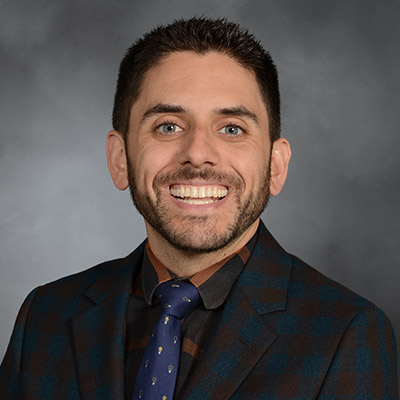Despite stroke being the leading cause of severe disability and mortality in the United States, patients and caregivers often fail to recognize the signs of stroke. “The problem is that even patients who have had a stroke and should be most attuned to the risk of stroke and what to look out for still either don’t know or don’t remember what to look for,” says Evan Noch, MD, PhD, a neurologist at NewYork-Presbyterian/Weill Cornell Medicine. “So, when they have a recurrent stroke, some still don’t recognize the signs of the new stroke. This is worse for patients who have never had a stroke and don’t know what to look out for.”
This can lead to a long lag between stroke symptoms and recognition, ultimately delaying the time to treatment. Time to treatment is a critical determinant of stroke outcomes, and patients seen within six hours of symptom onset have the greatest potential for burden reduction. New York-Presbyterian/Weill Cornell Medicine is one of the very few centers in the country that has a robust prehospital stroke program with ambulances that contain a CT scanner on board and can deliver clot-busting agents, like tPA, to patients before they even arrive at the hospital, thereby saving time in getting the patient the stroke treatment they need.
However, these centers are rare, meaning other solutions are needed. While stroke awareness campaigns have been implemented to help improve patient awareness, the literature shows that patient awareness only lasts while the campaign is active. As soon as the campaigns stop, patient awareness and recognition wanes.
Addressing Stroke Awareness Gaps Using Mobile Technology
Inspired by these gaps in awareness, Dr. Noch developed a mobile app, Destroke, to improve stroke education and reinforce awareness of stroke signs. He and his colleagues recently completed a prospective, open-label study to test the feasibility of Destroke, and the results were published in Heliyon in July 2023. The mobile app tracks symptoms of stroke through automated speech, motion, and facial recognition to assess 12 out of 16 tasks on the NIH Stroke Scale (NIHSS), a bedside clinical tool that providers use to evaluate patient signs of stroke, such as facial symmetry, symmetry of arms and legs, and how a patient speaks.
Nineteen patients with a history of stroke participated in this study and had a median time from stroke onset to enrollment of 5.6 years. The study was fully remote, with patients completing the test on their iPhones eight times over 28 days. Pre-study surveys assessed patient demographic and health information, baseline NIHSS score, experience with mobile technologies, and confidence in detecting the signs of stroke on a 5-point Likert scale. Mid- and post-surveys were conducted to assess patient satisfaction with the Destroke app, ease of use, confidence in detecting the signs of stroke, and how confident the patients were regarding their stroke recovery. The study also assessed whether the app performed as well as physicians at assessing patient stroke scores.

One of twelve test screens on the Destroke app prompts patients to name the objects they see on their screen.
On a 5-point Likert scale, patients rated their ability to understand and use the Destroke app as 4.2 and 4.3 when instructed by their physician. Use of the app was found to increase patients’ confidence in their ability to detect the signs of stroke. Specifically, all patients who rated their confidence level as 1 at baseline rated it as 4 or 5 after using the Destroke app. Further, the study found that, in most cases, the Destroke app performed as well as physicians in determining if the patients had signs consistent with stroke. Results from this study indicate that a mobile app for stroke monitoring and education is feasible and can improve patients’ confidence in detecting stroke.
The problem is that even patients who have had a stroke and should be most attuned to the risk of stroke and what to look out for still either don’t know or don’t remember what to look for. So, when they have a recurrent stroke, some still don’t recognize the signs of the new stroke. This is worse for patients who have never had a stroke and don’t know what to look out for.
— Dr. Evan Noch
Dr. Noch and his colleagues plan to continue to study the Destroke app's feasibility. They are currently performing a study at New York-Presbyterian/Weill Cornell Medicine to compare use of the Destroke app in inpatients who have had a stroke in the acute setting to the stroke scale the provider performs. The team hopes to zero in on how accurate and reliable the Destroke app is in the acute setting. The researchers also have future studies planned to compare how patients do after stroke discharge with the current standard of care versus having the Destroke app.
Disclosures: Dr. Noch is a cofounder of Destroke, Inc.




